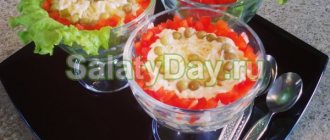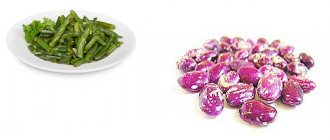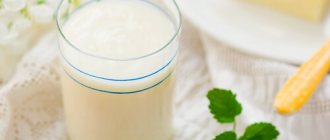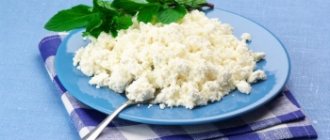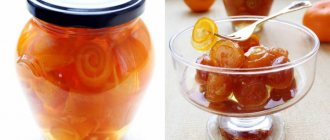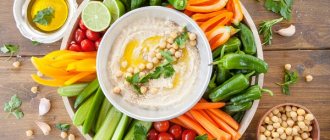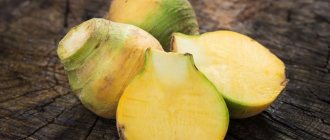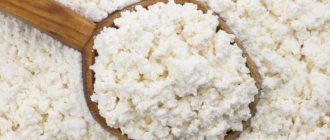How many calories are in red caviar
From a nutritional point of view, the egg is a “warehouse” of substances necessary for the development of the fry, therefore the nutritional value of the product is extremely high. Red caviar is obtained from fish of the salmon family:
- trout;
- pink salmon;
- sockeye salmon;
- coho salmon;
- chum salmon;
- Chinook salmon
Considering the different fat content of fish meat, the energy value of caviar also differs slightly.
How to choose a good product
When choosing a quality product, you should pay attention to the region and date of production - good caviar comes from producers who produce it in the fish’s habitat (Sakhalin, Far Eastern region). The type of caviar (must be the first) and the price are also important. The low price indicates that the product in the jar is most likely artificial and useless for the body. The most common granular caviar is pink salmon and chum salmon, and it is this that the main emphasis is placed, while other species are considered rare.
Recipes and calorie content of dishes
Fresh, unsalted caviar is not eaten. And salty does not tolerate heat treatment. Most often, red caviar is used in recipes for salads and various appetizers, less often - in its own form.
“Sea cocktail” salad with squid and red caviar
- pink salmon caviar, grainy (half a jar);
- crab sticks or crab meat (225 g);
- (450 g);
- (1 PC);
- (3 pieces);
- mayonnaise (4 tablespoons).
Caviar goes well in taste with seafood, but when preparing dishes it is important to strictly adhere to the recipe. Clean the squid carcasses from films and internal partitions, throw them into boiling water and cook for no more than three minutes. Remove, cool and cut into cubes or thin strips. Grind crab sticks or meat in the same way. Boil chicken and quail eggs, cool and peel. Set the quail egg aside, cut the chicken eggs into two parts and grate the whites. Mix all ingredients and season the salad with mayonnaise. Place the resulting dish in a salad bowl, garnish with a few grains of caviar and a whole quail egg on top. The calorie content of the snack is 132 kcal.
Rolls
To prepare a simple and nutritious snack, you will need simple ingredients. For the pancake base
:
Beat the egg with milk, add sugar, salt, add mayonnaise and mix the whole pancake mixture thoroughly.
Then add flour and soda, add vegetable oil and shake again. Bake pancakes on both sides in a frying pan greased with cooking oil. For filling
you will need:
- lightly salted salmon (175 g);
- (150 g);
- boiled (2 pieces);
- salt and black pepper;
- mustard (1 teaspoon);
- red caviar (half a jar);
Grind the cheese with mustard. Grate the peeled potatoes and cut the salmon fillet into thin slices. Grease the baked pancakes with curd cream and sprinkle with potatoes, place fish slices on the edge of the pancake, and several onion feathers and caviar in the middle. Roll the pancake into a roll and put it in the refrigerator for half an hour. Before serving, divide into portions, each of which is tied with an onion arrow. The energy value of such a roll is 185 kcal/100 g.
“Tsarskiy” salad with salmon and red caviar
- lightly salted salmon (100 g);
- boiled (1.5 cups);
- red caviar (¾ jar);
- chicken egg (3 pieces);
- onion (1 small head);
- 1 bunch;
- mayonnaise.
Remove the skin and large bones along the ridge from the fish, cut into strips or cubes. Boil the eggs, peel and chop. Cut the onion into 4 parts and chop into slices. To remove bitterness, onions can be marinated for 10-15 minutes in apple cider vinegar diluted 1:1 with water. Finely chop the parsley leaves. Mix all ingredients and season the salad with mayonnaise. Energy value 145 kcal/100 g.
Quail eggs with red caviar
- quail eggs (10 pieces);
- (60 g);
- red caviar (50 g);
- arugula (25 g);
- cilantro (10 g)
- dietary mayonnaise (25 g).
Boil the eggs, peel them, cut them into two parts, and carefully remove the yolks. Grate the cheese on a fine grater, chop the cilantro thoroughly. Using a fork, turn the yolks into a paste and mix with grated cheese, cilantro and mayonnaise. Decorate the dish with arugula leaves, place egg boats on top and carefully fill them with the resulting filling. Top with caviar. The calorie content of the dish is 260 kcal/100 g.
Neptune salad recipe
- tuna in its own juice (200 g);
- salt (quarter teaspoon);
- fresh (175 g);
- lime juice (25 ml);
- (45 ml);
- (1 piece);
- red caviar (50 g);
- ground black pepper.
This dish is low in calories, and the high content of fatty acids has a beneficial effect on the body and satisfies hunger. In a deep bowl, mash the tuna into small pieces with a fork, add caviar. Cut the fresh cucumber into small cubes, cutting off the top skin if necessary, and add to the fish. Wash the avocado, remove the pit and cut into cubes slightly larger than a cucumber, sprinkle with lime juice and after a couple of minutes pour into a bowl with the rest of the ingredients. To make the dressing, combine olive oil, remaining lime juice, salt and pepper. If desired, you can add a dessert spoon to the salad. The calorie content of the snack is 117 kcal.
Recipe for a sandwich with butter and red caviar. Calorie, chemical composition and nutritional value.
a sandwich with butter and red caviar
is rich in vitamins and minerals such as: vitamin A - 14.8%, vitamin B1 - 17.1%, vitamin E - 11.1%, vitamin PP - 21.4%, magnesium - 16, 4%, phosphorus - 24.3%, chlorine - 20.2%, manganese - 22.9%, molybdenum - 12.1%
- Vitamin A
is responsible for normal development, reproductive function, skin and eye health, and maintaining immunity. - Vitamin B1
is part of the most important enzymes of carbohydrate and energy metabolism, providing the body with energy and plastic substances, as well as the metabolism of branched amino acids. A lack of this vitamin leads to serious disorders of the nervous, digestive and cardiovascular systems. - Vitamin E
has antioxidant properties, is necessary for the functioning of the gonads and heart muscle, and is a universal stabilizer of cell membranes. With vitamin E deficiency, hemolysis of erythrocytes and neurological disorders are observed. - Vitamin PP
is involved in redox reactions of energy metabolism. Insufficient vitamin intake is accompanied by disruption of the normal condition of the skin, gastrointestinal tract and nervous system. - Magnesium
is involved in energy metabolism, the synthesis of proteins, nucleic acids, has a stabilizing effect on membranes, and is necessary to maintain the homeostasis of calcium, potassium and sodium. A lack of magnesium leads to hypomagnesemia, an increased risk of developing hypertension and heart disease. - Phosphorus
takes part in many physiological processes, including energy metabolism, regulates acid-base balance, is part of phospholipids, nucleotides and nucleic acids, and is necessary for the mineralization of bones and teeth. Deficiency leads to anorexia, anemia, and rickets. - Chlorine
is necessary for the formation and secretion of hydrochloric acid in the body. - Manganese
is involved in the formation of bone and connective tissue, and is part of enzymes involved in the metabolism of amino acids, carbohydrates, and catecholamines; necessary for the synthesis of cholesterol and nucleotides. Insufficient consumption is accompanied by slower growth, disturbances in the reproductive system, increased fragility of bone tissue, and disturbances in carbohydrate and lipid metabolism. - Molybdenum
is a cofactor for many enzymes that ensure the metabolism of sulfur-containing amino acids, purines and pyrimidines.
morehide
You can view a complete directory of the healthiest foods in the “My Healthy Diet” app.
health-diet.ru
Chemical composition and nutritional value of red caviar
% of the daily requirement indicated in the tables is an indicator indicating how many percent of the daily requirement in a substance we will satisfy the body's needs by eating 100 grams of red caviar.
How much protein, fat and carbohydrates (BJU) are in red caviar?
Most often, consumers prefer pink salmon caviar
– it is grainy, has a good consistency, pleasant taste and an affordable price range.
It is also called sturgeon
Red caviar
White caviar
Black caviar
The most expensive and rare caviar is black. It is also called sturgeon
, since most often we purchase the offal of this particular fish. However, stellate sturgeon caviar is also found. However, the difference in the proportions of nutrients and proteins, fats and carbohydrates is minimal. The difference in energy value can be only 10 - 15 kcal per 100 g.
The most nutritious and healthy caviar is beluga
(237 kcal per 100 g). But finding it in stores is almost impossible.
Red caviar
Red salmon caviar is one of the most popular. Most often on store shelves there is pink salmon caviar (the lowest calorie - 230 kcal per 100 g), chum salmon and sockeye salmon. Less often - salmon or Atlantic salmon. Most people prefer to eat it with a white loaf and butter. However, the healthiest sandwich is made on black bread with herbs. You can also put it in half a boiled egg, eliminating baked goods from your diet.
White caviar
White caviar is as healthy as its cousins - salmon and sturgeon. However, it has two advantages: affordable price and low calorie content. Send it on a piece of black bread or rye baguette - and a tasty and healthy snack is ready! Among the most common options are cod, pike and pollock caviar.
When buying whole lightly salted herring, some people expect to find delicious caviar inside. Not a bad bonus to add to your collection of useful substances!
Another favorite caviar by many is capelin. However, despite the initially low energy value of this caviar, the finished product from the store cannot boast of low calorie content. The fact is that capelin caviar is not consumed in its natural form. Typically, the salted or smoked product is mixed with mayonnaise, oil and flavor enhancers, which can negatively affect your figure and cholesterol levels. Therefore, when buying this delicacy, carefully study the composition
Until relatively recently, red caviar was considered a sign of high status in society and financial wealth. It was impossible to find it on store shelves, and it cost a lot of money. Today the situation has changed dramatically and buying it is now not difficult, but another problem has arisen - how to choose from a large number of offers not a counterfeit, but a real product. Today it is a symbol of the New Year and other holidays. People enjoy spreading it on bread in the morning before work, but the calorie content of a sandwich with butter and red caviar causes concern among those who are watching their figure.
Dose, benefit and contraindications
Many people are interested in the question: how much caviar can you eat per day? It turns out that doctors recommend consuming no more than 5 teaspoons of the delicacy per day. This is enough to enrich the body with valuable nutrients, which are found here in a concentrated state. Therefore, high energy value is not a problem even for people on a weight loss diet.
Seafood is useful for the following conditions:
- low immunity;
- viral infections;
- blurred vision;
- diseases of the musculoskeletal system;
- low hemoglobin;
- superficial wounds;
- elderly age.
Use the product with caution if you are prone to edema or cardiovascular diseases due to the high salt content.
Purines have a bad effect on the kidneys, so diseases of the organ are also a contraindication. How many “fish eggs” can be eaten for such diseases should be checked with your doctor.
You may also be interested
sandwich with butter and red caviar
rich in vitamins and minerals such as: vitamin A - 14.8%, vitamin B1 - 17.1%, vitamin E - 11.1%, vitamin PP - 21.4%, magnesium - 16.4%, phosphorus - 24 .3%, chlorine - 20.2%, manganese - 22.9%, molybdenum - 12.1%
- Vitamin A
is responsible for normal development, reproductive function, skin and eye health, and maintaining immunity. - Vitamin B1
is part of the most important enzymes of carbohydrate and energy metabolism, providing the body with energy and plastic substances, as well as the metabolism of branched amino acids. A lack of this vitamin leads to serious disorders of the nervous, digestive and cardiovascular systems. - Vitamin E
has antioxidant properties, is necessary for the functioning of the gonads and heart muscle, and is a universal stabilizer of cell membranes. With vitamin E deficiency, hemolysis of erythrocytes and neurological disorders are observed. - Vitamin PP
is involved in redox reactions of energy metabolism. Insufficient vitamin intake is accompanied by disruption of the normal condition of the skin, gastrointestinal tract and nervous system. - Magnesium
is involved in energy metabolism, the synthesis of proteins, nucleic acids, has a stabilizing effect on membranes, and is necessary to maintain the homeostasis of calcium, potassium and sodium. A lack of magnesium leads to hypomagnesemia, an increased risk of developing hypertension and heart disease. - Phosphorus
takes part in many physiological processes, including energy metabolism, regulates acid-base balance, is part of phospholipids, nucleotides and nucleic acids, and is necessary for the mineralization of bones and teeth. Deficiency leads to anorexia, anemia, and rickets. - Chlorine
is necessary for the formation and secretion of hydrochloric acid in the body. - Manganese
is involved in the formation of bone and connective tissue, and is part of enzymes involved in the metabolism of amino acids, carbohydrates, and catecholamines; necessary for the synthesis of cholesterol and nucleotides. Insufficient consumption is accompanied by slower growth, disturbances in the reproductive system, increased fragility of bone tissue, and disturbances in carbohydrate and lipid metabolism. - Molybdenum
is a cofactor for many enzymes that ensure the metabolism of sulfur-containing amino acids, purines and pyrimidines.
more hide
You can see the complete directory of the most useful products in the application
When hearing the word “caviar,” the face of a true connoisseur and gourmet takes on an expression of supreme pleasure and spiritual satisfaction. Still would! The world-famous “Russian caviar” is the standard of luxury and financial success, while emphasizing the refined gastronomic taste of a person. True, in this case we are talking about sturgeon (black) caviar, the cost of which on the market has long been measured in thousands of dollars. Alas, sturgeon stocks are dwindling, and even their artificial breeding cannot saturate the market with this gastronomic masterpiece.
We will focus on the more affordable caviar – red. This product is obtained from fish of the salmon family, representatives of which are still very numerous, especially in the northern part of the Pacific Basin. The main “suppliers” of red caviar are pink salmon, sockeye salmon, coho salmon, and chum salmon. The most common is pink salmon caviar, and the largest is sockeye salmon.
Calorie content and benefits of caviar
It is well known that caviar is the most valuable food product and, in addition to its exceptional taste, has enormous nutritional value and is capable of independently maintaining the human body in good shape, even if there is no other food.
Let's take a look at the most interesting thing, how many calories are in red caviar. Per 100 g of net weight there are about 260–300 kcal. True, when eating sandwiches with it, you need to take into account not only the calorie content of red caviar, but also:
- butter – 748 kcal/100 g;
- white bread – 266 kcal/100 g.
As you can see, caviar, a fatty and nutritious product, is nothing compared to bread and butter.
Especially healthy and rich in vitamins is fresh, lightly salted red caviar, made from freshly caught fish - the so-called “five-minute caviar” among the people. However, alas, this truly royal dish can only be tasted in the Far East and only in a certain season, when herds of salmon go from the ocean to the rivers to spawn...
Calorie content of red caviar and weight loss
The calorie content of red caviar leads to the fact that many people who are concerned about maintaining their figure are afraid of it. At the same time, its relative high cost in areas far from its production also does not contribute to its frequent consumption.
Calories consumed not with red caviar, but because of it, quickly add up as soon as we begin to generously flavor white rolls (with caviar, after all!) with butter, or even consume it with fatty pancakes. And, to be honest, this will only affect your figure in case of restless consumption - either 3 liter jars of caviar per day, or a whole pack of oil for a 50 g jar of modest salmon caviar.
If you consume 50-100 grams of caviar daily with a moderate amount of “additional foods” (bread, butter, pancakes), this will not lead to weight gain, but will provide your energy resource for the whole day!
So the red caviar diet is not fiction at all, but quite a reality. A hundred gram jar of caviar a day, a little cracker and a lot - an excellent energy diet for a week!
Caviar is an expensive and delicious product. The bright orange flecks usually decorate sandwiches at feasts and celebrations, although large supermarkets offer attractive green jars all year round. Read more about it in a separate issue.
Health benefits of a sandwich with red caviar and butter
Nowadays, there really are no problems with products, and the concept of a delicacy itself has somewhat lost its meaning, but such availability often leads to undesirable consequences in the form of extra pounds that interfere with life. Red caviar and butter are not only tasty, but also healthy, so, first of all, we are not interested in their combined calorie content, but in the presence of beneficial properties. Let's start with the main product - red caviar, which contains a huge amount of vitamins.
Red caviar contains vitamin A, which helps restore immunity, so it is very useful for various colds. It also contains in sufficient quantities some B vitamins, which normalize the functioning of internal organs and the brain, vitamins E and D, folic acid and some useful minerals - potassium, sodium, cobalt and iodine, which is especially important. For its part, butter also boasts the presence of a unique vitamin and mineral complex, which makes sandwiches with caviar and butter incredibly healthy, and calories should be discussed separately.
Calorie content of a sandwich with butter and red caviar
Having figured out how many calories are contained in this or that type of caviar, we can move on to the dish itself. Butter is not low in calories, so 100 grams of the finished product yields approximately 350-450 kcal. Of course, you can use spread or other spreads, but the taste of the snack will change dramatically.
When preparing sandwiches with caviar and butter, the calorie content of which is 170-290 kcal, it is customary to use fresh baguette or toast bread. It is best to stick to red caviar, as it is more accessible, has a number of useful properties and is ideal for the holiday table.
How many calories are in a sandwich with caviar and butter?
Butter, which is included in many products and dishes, has a high calorie content - 100 grams of butter with a fat content of 82.5% contains approximately 750 kcal, but this should not frighten those who consume it in small quantities. As for caviar, 100 grams of the product contains approximately 260 calories. This is not a lot, considering the fact that you are unlikely to eat such an amount of this not the cheapest product every day, and a standard sandwich requires 10-15 grams of caviar.
As for butter, an average of 15-20 grams of it is spread on bread, which means that one or two sandwiches will not cause much harm to your body, especially if you do not use the fattest product to prepare them. Now all that remains is to calculate the calorie content of the bread, otherwise it depends on its type. For example, the calorie content of grain bread is 230 kcal per 100 grams of product, and approximately 20 grams of bread are consumed for a sandwich with caviar. Thus, we can calculate how many calories are in the sandwich - it is approximately 335-340 calories per 100 grams, which means that the total is no more than 170 calories. Considering that the total number of permissible calories every day is 2000-3000, depending on gender, age and physical activity, this is quite acceptable.
Sandwiches with red caviar - original and festive
Recipe Sandwich with caviar. Calorie, chemical composition and nutritional value.
Nutritional value and chemical composition of “Caviar Sandwich”.
The table shows the nutritional content (calories, proteins, fats, carbohydrates, vitamins and minerals) per 100 grams of edible portion.
| Nutrient | Quantity | Norm** | % of the norm in 100 g | % of the norm in 100 kcal | 100% normal |
| Calorie content | 362 kcal | 1684 kcal | 21.5% | 5.9% | 465 g |
| Squirrels | 11.6 g | 76 g | 15.3% | 4.2% | 655 g |
| Fats | 23.9 g | 56 g | 42.7% | 11.8% | 234 g |
| Carbohydrates | 25.1 g | 219 g | 11.5% | 3.2% | 873 g |
| Organic acids | 0.2 g | ~ | |||
| Alimentary fiber | 1.3 g | 20 g | 6.5% | 1.8% | 1538 g |
| Water | 35.3 g | 2273 g | 1.6% | 0.4% | 6439 g |
| Ash | 2.7 g | ~ | |||
| Vitamins | |||||
| Vitamin A, RE | 225.7 mcg | 900 mcg | 25.1% | 6.9% | 399 g |
| Retinol | 0.21 mg | ~ | |||
| beta carotene | 0.095 mg | 5 mg | 1.9% | 0.5% | 5263 g |
| Vitamin B1, thiamine | 0.183 mg | 1.5 mg | 12.2% | 3.4% | 820 g |
| Vitamin B2, riboflavin | 0.14 mg | 1.8 mg | 7.8% | 2.2% | 1286 g |
| Vitamin B4, choline | 18.9 mg | 500 mg | 3.8% | 1% | 2646 g |
| Vitamin B5, pantothenic | 0.095 mg | 5 mg | 1.9% | 0.5% | 5263 g |
| Vitamin B6, pyridoxine | 0.055 mg | 2 mg | 2.8% | 0.8% | 3636 g |
| Vitamin B9, folates | 11.25 mcg | 400 mcg | 2.8% | 0.8% | 3556 g |
| Vitamin C, ascorbic acid | 0.63 mg | 90 mg | 0.7% | 0.2% | 14286 g |
| Vitamin D, calciferol | 0.375 mcg | 10 mcg | 3.8% | 1% | 2667 g |
| Vitamin E, alpha tocopherol, TE | 1.425 mg | 15 mg | 9.5% | 2.6% | 1053 g |
| Vitamin H, biotin | 0.62 mcg | 50 mcg | 1.2% | 0.3% | 8065 g |
| Vitamin RR, NE | 3.025 mg | 20 mg | 15.1% | 4.2% | 661 g |
| Niacin | 0.813 mg | ~ | |||
| Macronutrients | |||||
| Potassium, K | 71.5 mg | 2500 mg | 2.9% | 0.8% | 3497 g |
| Calcium, Ca | 31.75 mg | 1000 mg | 3.2% | 0.9% | 3150 g |
| Silicon, Si | 1.45 mg | 30 mg | 4.8% | 1.3% | 2069 g |
| Magnesium, Mg | 42.35 mg | 400 mg | 10.6% | 2.9% | 945 g |
| Sodium, Na | 812.5 mg | 1300 mg | 62.5% | 17.3% | 160 g |
| Sera, S | 104.75 mg | 1000 mg | 10.5% | 2.9% | 955 g |
| Phosphorus, Ph | 143.8 mg | 800 mg | 18% | 5% | 556 g |
| Chlorine, Cl | 412 mg | 2300 mg | 17.9% | 4.9% | 558 g |
| Microelements | |||||
| Bor, B | 24 mcg | ~ | |||
| Vanadium, V | 33 mcg | ~ | |||
| Iron, Fe | 1.1 mg | 18 mg | 6.1% | 1.7% | 1636 g |
| Yod, I | 1.6 mcg | 150 mcg | 1.1% | 0.3% | 9375 g |
| Cobalt, Co | 0.7 mcg | 10 mcg | 7% | 1.9% | 1429 g |
| Manganese, Mn | 0.225 mg | 2 mg | 11.3% | 3.1% | 889 g |
| Copper, Cu | 40 mcg | 1000 mcg | 4% | 1.1% | 2500 g |
| Molybdenum, Mo | 5.3 mcg | 70 mcg | 7.6% | 2.1% | 1321 g |
| Selenium, Se | 3 mcg | 55 mcg | 5.5% | 1.5% | 1833 |
| Fluorine, F | 7.25 mcg | 4000 mcg | 0.2% | 0.1% | 55172 g |
| Chromium, Cr | 0.8 mcg | 50 mcg | 1.6% | 0.4% | 6250 g |
| Zinc, Zn | 0.293 mg | 12 mg | 2.4% | 0.7% | 4096 g |
| Digestible carbohydrates | |||||
| Starch and dextrins | 24.25 g | ~ | |||
| Mono- and disaccharides (sugars) | 0.6 g | max 100 g | |||
| Galactose | 0.035 g | ~ | |||
| Glucose (dextrose) | 0.095 g | ~ | |||
| Maltose | 0.42 g | ~ | |||
| Sucrose | 0.02 g | ~ | |||
| Fructose | 0.135 g | ~ | |||
| Essential amino acids | |||||
| Arginine* | 0.15 g | ~ | |||
| Valin | 0.175 g | ~ | |||
| Histidine* | 0.075 g | ~ | |||
| Isoleucine | 0.16 g | ~ | |||
| Leucine | 0.295 g | ~ | |||
| Lysine | 0.095 g | ~ | |||
| Methionine | 0.055 g | ~ | |||
| Methionine + Cysteine | 0.13 g | ~ | |||
| Threonine | 0.115 g | ~ | |||
| Tryptophan | 0.035 g | ~ | |||
| Phenylalanine | 0.185 g | ~ | |||
| Phenylalanine+Tyrosine | 0.275 g | ~ | |||
| Nonessential amino acids | |||||
| Alanin | 0.12 g | ~ | |||
| Aspartic acid | 0.125 g | ~ | |||
| Glycine | 0.13 g | ~ | |||
| Glutamic acid | 1.125 g | ~ | |||
| Proline | 0.355 g | ~ | |||
| Serin | 0.185 g | ~ | |||
| Tyrosine | 0.095 g | ~ | |||
| Cysteine | 0.075 g | ~ | |||
| Sterols (sterols) | |||||
| Cholesterol | 125 mg | max 300 mg | |||
| Saturated fatty acids | |||||
| Saturated fatty acids | 14 g | max 18.7 g | |||
| 16:0 Palmitinaya | 0.05 g | ~ | |||
| 18:0 Stearic | 0.005 g | ~ | |||
| Monounsaturated fatty acids | 0.045 g | min 16.8 g | 0.3% | 0.1% | |
| 16:1 Palmitoleic | 0.005 g | ~ | |||
| 18:1 Oleic (omega-9) | 0.04 g | ~ | |||
| Polyunsaturated fatty acids | 0.81 g | from 11.2 to 20.6 g | 7.2% | 2% | |
| 18:2 Linolevaya | 0.175 g | ~ | |||
| 18:3 Linolenic | 0.01 g | ~ | |||
| Omega-6 fatty acids | 0.2 g | from 4.7 to 16.8 g | 4.3% | 1.2% |
The energy value of a caviar sandwich is 362 kcal.
Primary Source: Created in the application by the user. Read more.
** This table shows the average levels of vitamins and minerals for an adult. If you want to know the norms taking into account your gender, age and other factors, then use the “My Healthy Diet” application.
health-diet.ru
How to determine the quality of caviar
Chain stores and supermarkets offer a wide range of food products. And this cannot but please buyers. But how to distinguish high-quality caviar from low-quality caviar? If it is sold by weight, then you can still carry out a visual inspection, and in some cases even taste it. But most often red caviar is supplied in tin jars, which greatly complicates the task.
- Remember one thing: a quality product (in our case caviar) cannot cost a penny. However, too high a price does not guarantee that you will receive a 100% natural product. A “golden mean” is needed here.
- The ideal packaging for caviar is a glass jar. It allows the buyer to clearly see the product. However, if you come across caviar in opaque packaging, this does not mean that the product is of low quality. Be sure to pay attention to the tightness of the packaging, the date of manufacture and the composition of the product.
- If caviar contains salt and sodium benzoate (E211) - no problem, you can safely buy it. The presence of additional ingredients sharply reduces the quality of the product and increases its calorie content.
- One of the most important criteria for tin cans is the markings stamped on the inside.
- Be sure to check the availability of the GOST standard. If it is not there, then the quality of the product can be questioned.
- To avoid misunderstandings and waste of money, we advise you to study the packaging in a store and not at home.
- The eggs should not be too large, tightly pressed to each other. Color ranges from pale orange to dark red.
Warning
There is no doubt about the benefits of red caviar for the human body. But this is only if you purchased a quality product. If the technology, processing, packaging and storage are violated, the delicacy beloved by, if not everyone, then by many, can cause great harm.
A concave marking on a tin can is a sure sign of falsification. Caviar should not contain methenamine (E239) and sorbic acid (E200). They are very dangerous. When opening the jar, you should pay attention to the condition of the eggs. If they are cloudy, with damaged integrity and covered with plaque, then they should not be eaten.
Recipe Sandwich with red caviar. Calorie, chemical composition and nutritional value.
A sandwich with red caviar
is rich in vitamins and minerals such as: vitamin A - 37.6%, vitamin B1 - 23.5%, vitamin B2 - 13.7%, vitamin E - 15.9%, vitamin PP - 26.2 %, magnesium - 20.3%, phosphorus - 37.3%, manganese - 13.2%
- Vitamin A
is responsible for normal development, reproductive function, skin and eye health, and maintaining immunity. - Vitamin B1
is part of the most important enzymes of carbohydrate and energy metabolism, providing the body with energy and plastic substances, as well as the metabolism of branched amino acids. A lack of this vitamin leads to serious disorders of the nervous, digestive and cardiovascular systems. - Vitamin B2
is involved in redox reactions, helps to increase the color sensitivity of the visual analyzer and dark adaptation. Insufficient intake of vitamin B2 is accompanied by impaired condition of the skin, mucous membranes, and impaired light and twilight vision. - Vitamin E
has antioxidant properties, is necessary for the functioning of the gonads and heart muscle, and is a universal stabilizer of cell membranes. With vitamin E deficiency, hemolysis of erythrocytes and neurological disorders are observed. - Vitamin PP
is involved in redox reactions of energy metabolism. Insufficient vitamin intake is accompanied by disruption of the normal condition of the skin, gastrointestinal tract and nervous system. - Magnesium
is involved in energy metabolism, the synthesis of proteins, nucleic acids, has a stabilizing effect on membranes, and is necessary to maintain the homeostasis of calcium, potassium and sodium. A lack of magnesium leads to hypomagnesemia, an increased risk of developing hypertension and heart disease. - Phosphorus
takes part in many physiological processes, including energy metabolism, regulates acid-base balance, is part of phospholipids, nucleotides and nucleic acids, and is necessary for the mineralization of bones and teeth. Deficiency leads to anorexia, anemia, and rickets. - Manganese
is involved in the formation of bone and connective tissue, and is part of enzymes involved in the metabolism of amino acids, carbohydrates, and catecholamines; necessary for the synthesis of cholesterol and nucleotides. Insufficient consumption is accompanied by slower growth, disturbances in the reproductive system, increased fragility of bone tissue, and disturbances in carbohydrate and lipid metabolism.
morehide
You can view a complete directory of the healthiest foods in the “My Healthy Diet” app.
health-diet.ru
Types of red caviar
Fish of the salmon family give us a wonderful delicacy: trout, chum salmon, sockeye salmon, pink salmon and coho salmon. Their eggs may differ from each other in taste, appearance and size. Moreover, they are all equally beneficial for the human body.
Varieties:
1. Chinook salmon caviar. It is considered the largest (7 mm). It has a bitter taste and a bright red hue. It is almost impossible to try the caviar of this fish. And all because the latter is included in the Red Book.
2. Chum salmon caviar. Used to decorate dishes. The eggs are spherical in shape and have a bright amber hue. The taste is not for everyone.
3. Pink salmon caviar (5 mm). It is extremely popular among gourmets all over the world. The eggs are colored light orange. They are surrounded by a loose shell. The calorie content of red pink salmon caviar is 230 kcal per 100 g of product.
4. Sockeye salmon caviar (4 mm). The taste is similar to the previous version. This fish species is on the verge of extinction.
5. Trout caviar (2-3 mm). It is considered the smallest in this classification. The eggs can vary in color, ranging from pale yellow to deep orange.
How to serve caviar
Are you planning a big holiday (anniversary, wedding anniversary or something else)? Don't know how to surprise your guests? An excellent option would be red caviar. You can serve it as an independent snack by placing it in a glass caviar bowl. But it is best to prepare dishes with the addition of caviar. For example, a festive salad of salmon, onions and boiled rice. Mayonnaise of any fat content is suitable as a dressing. Pancakes and eggs are also stuffed with red caviar, and rolls and sandwiches are made from it. Use your imagination and create new dishes.
Nowadays, more and more people are starting to eat right and take care of their health and figure. But even they sometimes want to try some delicacy. For example, red caviar. She looks very tasty. In addition, at every step they talk about its benefits for the body. What then stops people following a diet or proper nutrition? Most likely, red caviar is high in calories. But if you look at it, there is no problem.
The quality and quantity of the product eaten plays a big role. The fact is that it contains salt, excessive consumption of which leads to fluid retention in the body. The calorie content of red caviar is 270 kcal per 100 g of product. Indeed, the figure is impressive. But if you eat no more than 2-3 tbsp per day. l., then this will not affect the figure in any way.
Recipe Sandwich with caviar. Calorie, chemical composition and nutritional value.
The caviar sandwich
is rich in vitamins and minerals such as: vitamin A - 14.4%, vitamin B1 - 16.2%, vitamin E - 11%, vitamin PP - 14.1%, phosphorus - 12.7%, chlorine - 55.1%, cobalt - 474.6%, manganese - 30.3%, copper - 18.3%, molybdenum - 22.3%
- Vitamin A
is responsible for normal development, reproductive function, skin and eye health, and maintaining immunity. - Vitamin B1
is part of the most important enzymes of carbohydrate and energy metabolism, providing the body with energy and plastic substances, as well as the metabolism of branched amino acids. A lack of this vitamin leads to serious disorders of the nervous, digestive and cardiovascular systems. - Vitamin E
has antioxidant properties, is necessary for the functioning of the gonads and heart muscle, and is a universal stabilizer of cell membranes. With vitamin E deficiency, hemolysis of erythrocytes and neurological disorders are observed. - Vitamin PP
is involved in redox reactions of energy metabolism. Insufficient vitamin intake is accompanied by disruption of the normal condition of the skin, gastrointestinal tract and nervous system. - Phosphorus
takes part in many physiological processes, including energy metabolism, regulates acid-base balance, is part of phospholipids, nucleotides and nucleic acids, and is necessary for the mineralization of bones and teeth. Deficiency leads to anorexia, anemia, and rickets. - Chlorine
is necessary for the formation and secretion of hydrochloric acid in the body. - Cobalt
is part of vitamin B12. Activates enzymes of fatty acid metabolism and folic acid metabolism. - Manganese
is involved in the formation of bone and connective tissue, and is part of enzymes involved in the metabolism of amino acids, carbohydrates, and catecholamines; necessary for the synthesis of cholesterol and nucleotides. Insufficient consumption is accompanied by slower growth, disturbances in the reproductive system, increased fragility of bone tissue, and disturbances in carbohydrate and lipid metabolism. - Copper
is part of enzymes that have redox activity and are involved in the metabolism of iron, stimulates the absorption of proteins and carbohydrates. Participates in the processes of providing oxygen to the tissues of the human body. Deficiency is manifested by disturbances in the formation of the cardiovascular system and skeleton, and the development of connective tissue dysplasia. - Molybdenum
is a cofactor for many enzymes that ensure the metabolism of sulfur-containing amino acids, purines and pyrimidines.
morehide
You can view a complete directory of the healthiest foods in the “My Healthy Diet” app.
health-diet.ru
Pancakes with caviar
Food set (for 5 servings):
- 200 g buckwheat flour;
- chicken eggs - 3 pieces;
- 500 ml milk;
- 50 g butter;
- 1 tbsp. l cognac;
- 100 g red caviar;
- 1 tbsp. l sugar;
- 200 g flour.
Practical part
1. In a deep cup, mix warm milk and the same water. Add the yolks, grated with butter. Salt. Add the specified amount of sugar. Whisk all these ingredients thoroughly using a whisk.
2. Add flour. Whisk the contents of the cup again. Add whites. Add oil and cognac. Mix. We should get a dough with a consistency similar to sour cream.
3. Bake pancakes in a hot frying pan, the bottom of which is greased with lard. As soon as a golden crust appears on one side, turn the pancake over. The main thing is that it doesn’t burn. Grease the finished pancakes generously with oil, place them on top of each other, and at the end of the process, cover with a lid and put them in a warm place for 5 minutes. Then we take them out. Place red caviar in the middle of each pancake and wrap it in an envelope. You can use lettuce or basil to decorate the dish.
